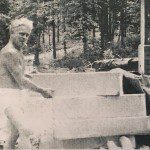Recently the studio has received a lot of inquiries from people who are at their wits’ end with fitness:
“Nothing works.”
“I’m in pain every day.”
“I’ve tried everything I can think of.”
“Will Pilates help me?”
For someone who suffers an injury or undergoes an operation, rehabilitating the body is critical to the healing process, which is still ongoing after physical therapy concludes. We meet many people who have been signed off as “all better” by their healthcare providers, but now are unsure what the next step is. The fact is, they don’t feel all better. There’s still a lot of work to be done. But after physical therapy, getting a gym membership isn’t a solution. A lot of these people are wondering, “Where can I go?”
We’re so glad you asked! At Dynamic Fitness, we understand that someone recovering from an injury or surgery needs an exercise regimen that is careful, personal, and adaptable. A classical Pilates studio provides just such an environment.
It’s important that your physician has first cleared you for exercise before beginning a Pilates regimen. At Dynamic Fitness, we can only start working with new clients who are recuperating from surgery or an injury once their doctors can recommend physical exercise. Once you’ve passed this milestone, however, you’re ready to discover a fitness method that can be just as gentle and safe as it is effective.
The classical Pilates method includes over 300 motions, and this already broad vocabulary has the potential to explode when you work with an experienced, certified instructor. The instructors at Dynamic Fitness are deeply knowledgeable about modifications to each exercise that can accommodate the places that are still healing, while you continue to reap the benefits of a full-body workout.
The Pilates apparatus are also designed for accessibility and refined control. Take, for example, the springs of the Reformer and Tower, with different weights to support or challenge the muscles depending on your needs. You can also get a lot of work done on the Cadillac, which in many ways resembles a traditional physical therapy or massage table. It’s just the right height to make mounting and dismounting easy, and you can work out the entire body on its strong, stable frame.
When you’re going through physical rehab, all your energy and focus goes to the part of the body that you’re trying to fix. In Pilates, we don’t focus on the problem. Instead, we work with you to condition the body whole. Instead of thinking in terms of what is broken, we think in terms of what really works. Our clients tell us this makes a dramatic difference in achieving physical restoration and a feeling of radiant wellbeing.
Have you reached your wits’ end with fitness? Don’t give up! Call or email Dynamic Fitness to discuss the challenges you’re currently facing, and learn more about the power of Pilates to restore your body and rejuvenate your life.
Contact us: https://www.pilates-sarasota.com/contact



